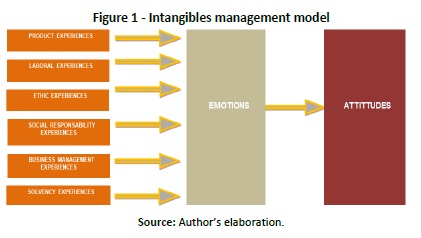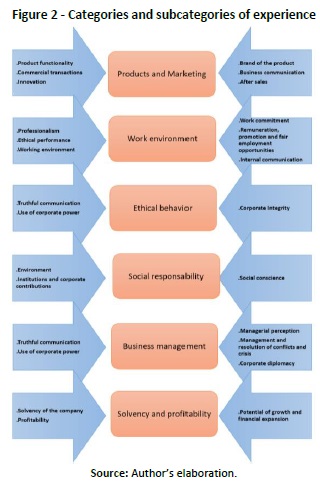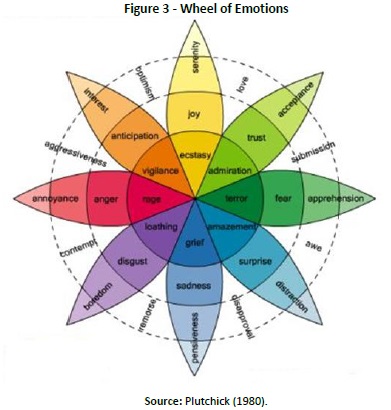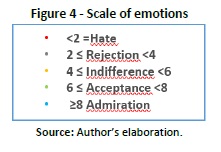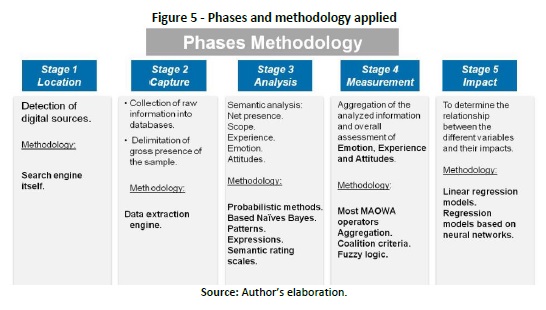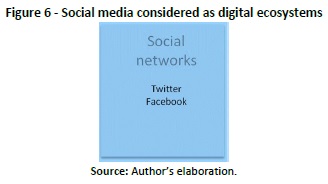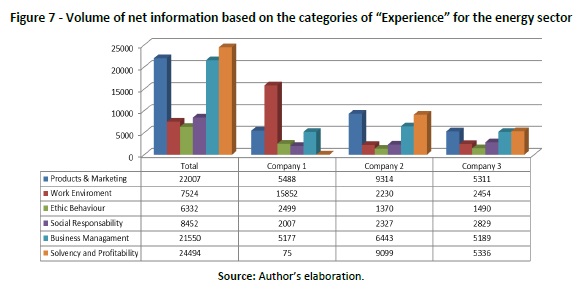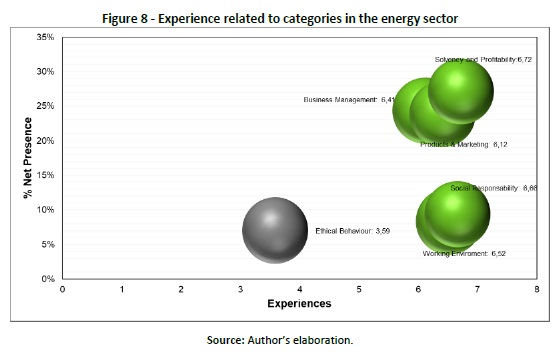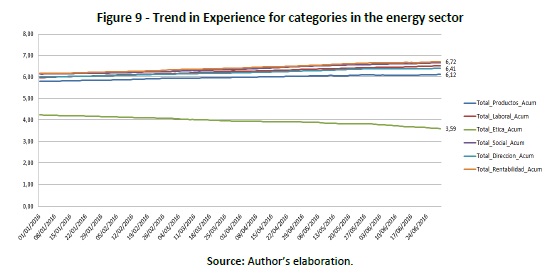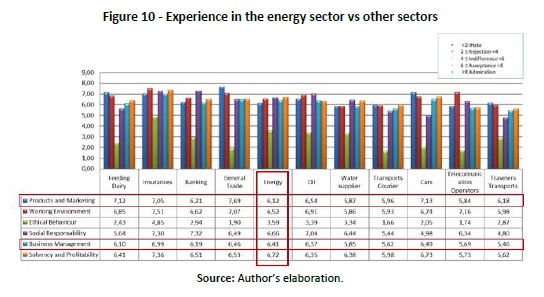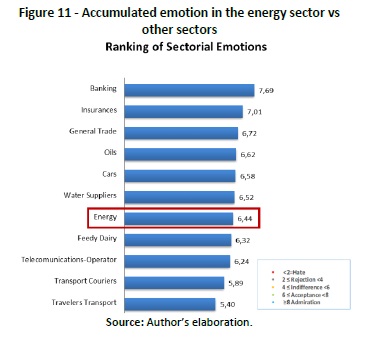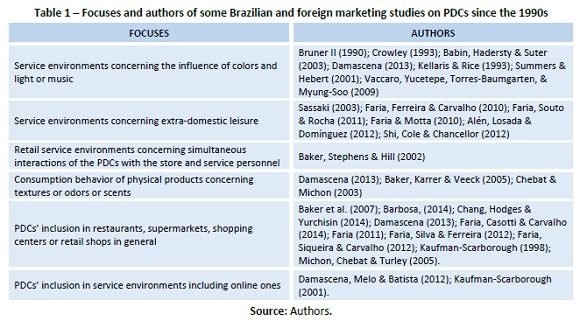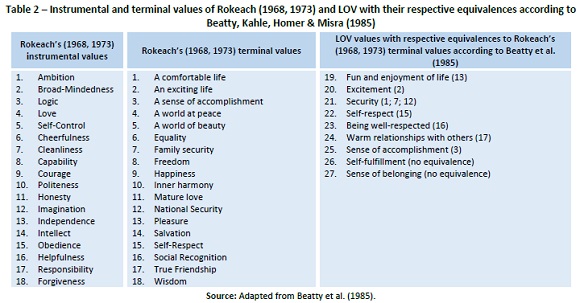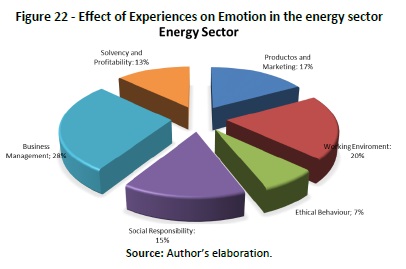Serviços Personalizados
Journal
Artigo
Indicadores
Links relacionados
Compartilhar
Tourism & Management Studies
versão impressa ISSN 2182-8458versão On-line ISSN 2182-8466
TMStudies vol.14 no.3 Faro set. 2018
https://doi.org/10.18089/tms.2018.14308
MANAGEMENT: SCIENTIFIC PAPERS
Managing Relational Capital for the Sustainability of the Energy Sector in the Social Media
Gestão do Capital Relacional para a Sustentabilidade do Setor de Energia através dos Social Media
Ana-María Casado-Molina1, Célia M.Q. Ramos2, Francisco Cabrera3
1University of Malaga, Faculty of Commerce and Management, Malaga, Spain, acasado@uma.es
2Universidade do Algarve, ESGHT, CIEO & CEFAGE, Faro, Portugal, cmramos@ualg.pt
3University of Malaga, E.T.S.I. Informatics, Malaga, Spain, fecabrera@uma.es
ABSTRACT
Various management models have been proposed for intangible business assets in this new digital era. However, these models do not consider the relationships between intangible assets in business management, or their effect. This work has two main objectives: first, to show the effect of intangi-ble assets as expressed in digital media related to energy brands; second, to demonstrate the relationships between the emotions, experiences and attitudes of the audiences. To do so, a novel model of intangibles is proposed and applied to the energy sector using IBEX 35 data. In this sce-nario, we determine that users’ experiences extracted from digital environments have significant relationships with one of the most important intangibles in the energy business, namely emotion.
Keywords: Emotion, digital influencers, intangibles management, reputational intelligence, social media.
RESUMO
Vários modelos de gestão foram propostos para ativos de negócios intangíveis nesta nova era digital. No entanto, esses modelos não consideram as relações entre ativos intangíveis na gestão ou os seus efeitos. Este estudo tem dois objetivos principais: primeiro, mostrar o efeito dos ativos intan-gíveis expressos nos meios digitais relacionados com as marcas associadas ao setor económico da energia; segundo, demonstrar as relações entre as emoções, experiências e atitudes do público. Para esse efeito, é proposto um novo modelo de gestão de intangíveis aplicado ao setor de energia utili-zando dados do IBEX 35. Nesse cenário, concluímos que as experiências dos utilizadores extraídas de ambientes digitais têm relacionamentos significativos com um dos intangíveis mais importantes no negócio de energia, ou seja, a emoção.
Palavras-chave: Emoção, gestão de intangíveis, influenciadores digitais, reputação inteligente, social media.
1. Introduction
Globalization and the rapid development of information technology are forcing companies to look for new ways to ensure their sustainability over time and differentiate themselves in competitive markets (Millar, Hind, & Maga, 2012). In a global environment, control of the flow of information on products, services and brands is becoming a key task for business (Li & Bernoff, 2008). Strategic audiences (consumers, financial analysts, investors) and stakeholders want to know what lies behind the products, services and offers and are demanding greater transparency in relation to business activities. The public express their opinions in digital ecosystems on social networks (Celaya, 2008), interacting with other users in online communities (Ritter, 2009), sharing their experiences (Schau & Gilly, 2003), expressing their views and exercising their influence quickly and forcefully to an increasingly wider audience. Therefore, markets are interconnected (Best, 2007) and consumers have growing decision power and influence over brands (Celaya, 2008).
In this new context, companies need to hear and know public perceptions about them (Casado, Méndiz, & Peláez, 2013) to adjust their strategies in the short and long term (Frooman, 1999; Zink, 2005). In this situation, companies incorporate intangibles into their strategies as a differential value offering economic and social sustainability. In this second decade of the century, 70% of the value of a company depends on its intangible assets (Daum, 2002), which are among the main assets of differentiation (Edvinsson & Malone, 1997; Nonaka, 1994; Nonaka, & Takeouchi, 1995).
Given the need for companies to assess and predict the impact of their intangibles in transverse form in their strategy and business, it is necessary to make advances in the field of measurement by incorporating intangible indicators in scorecards. Different models have been proposed, but these models do not include the mainstreaming of intangible assets in the management of the company or how they affect different areas of business (Casado & Peláez, 2014). Likewise, numerous studies support the notion that there is a relationship between intangible assets, such as reputation, and tangible assets, such as the price or market value (Roberson & Park, 2007). However, no evidence has been found using existing tools or by developing a cross-sectional model relating the intangible assets of relational capital - experiences, emotions and attitudes - among the public regarding a company to the management developed by the company or the impacts generated between them.
This work is organized as follows. First, the objectives of the research are delimited. Second, an analysis of the relational capital variables and steps in developing a model of transversal management of intangibles are elaborated. An example of the application of the model in the energy sector follows. Finally, the paper ends with conclusions.
2. Research objectives
This paper has a twofold objective: first to show how intangible assets (experiences, emotions and attitudes), expressed in digital media, affect the energy sector; second, to show the
kinds of relationships between the emotions and experiences of firms’ stakeholders. To achieve these two objectives, the following hypotheses are proposed:
▪ H1: Attitudes to the energy sector are connected with user experiences and emotions expressed through social media.
▪ H2: A direct relation exists between emotions and experiences.
The study was conducted in the energy sector, considering all companies quoted on the IBEX 35. The data in question are taken from public sources in digital ecosystems.
3. Variables and Methodology
3.1 Intangible asset variables in social media
The literature contains models that conceptualize intangibles as perceptual constructs in terms of perceptions of past actions of a company and also as an attitudinal construct in terms of the attractiveness of the firm (Casado & Peláez, 2014). Others add to the models concepts such as the experiences, intentions and behaviours of the public (Waddock, 2002). However, to define a model clearly for managing intangibles that can help create value in a business, it is necessary to distinguish in the model what aspects are precedents and what are consequences (Money & Hillenbrand, 2006).
It is thus important to define the variables of intangibles in a reason-effect model to enable the management of intangibles in a transverse and holistic way, based on the maxim of creating value for the business through relations with the public (MacMillan, Money, & Downing, 2000). As shown in Figure 1, different users’ experiences can give rise to positive, neutral or negative emotions related to the brand; ultimately, such emotions generate consequences, specifically attitudes that can generate behavioural intentions.
Experiences
The first intangible variable concerns the experiences that different strategic users of information and the public express in social data about companies. In identifying these experiences, companies open up a channel for continuously monitoring what different parts of the public think of the performance of the firm’s daily activity: actions and communications undertaken in different corporate areas. Several studies have analysed the main variables or attributes that explain the experiences of the public related to the company (Carreras, Alloza, & Carreras, 2013; Fombrun & van Riel, 2004; O’Really, Chatman, & Caldwell, 1991). Among the main dimensions in these studies are the following: supply, innovation, work, integrity, citizenship, leadership and finance.
In this paper, the variable “Experience” concerns the acquaintance that audiences have with the management of the company expressed through social media, classified into 6 main categories and 26 dynamic subcategories, as shown in Figure 2. This includes the types of public experiences and is related to an internal analysis (experiences of different audiences in the cluster for a specific delegation) and an external analysis (to determine the degree of satisfaction with their experience of the management and performance of the company relative to its main competitors and the sector overall).
Emotions
Emotions are an affective condition that the public experience, a subjective reaction to the environment accompanied by organic changes of innate origin, influenced by experience. Plutchick (1980) explains the interrelationships between human emotions through the Wheel of Emotions (see Figure 3).
This wheel consists of eight basic emotions and eight advanced emotions, each composed of two basic emotions. The wheel has two dimensions: (i) polarity, indicating that emotion is positive or negative; (ii) intensity, showing the degree of positivity or negativity.
However, in today’s world, in which opinions can be issued by anyone at any time, with increasingly wide reach, it is necessary to include a third dimension: quality. Quality reflects the importance of those issuing such opinions and expressing emotions and the scope thereof with respect to the company or brand.
In this research, the variable “Emotion” concerns the moods of the individual in response to their experiences with the environment. The emotions expressed by the public are analysed in phraseological units. These are:
▪ Tone: polarity.
▪ Intensity: degree of tone.
▪ Quality: a function of who emits emotion and its scope.
Digital emotion, in our model, is expressed in values in the range 1-10, following the rating scale of Miller (1956) and as presented in Figure 4.
Attitude
Attitudes are learned favourable or unfavourable predispositions towards something. They are learned depending on the experiences that different stakeholders have with goods and with the information they receive from different media: opinion leaders, etc. They are also a potential cause of intentionality and ultimately behaviour on the part of the stakeholder. Attitudes can be measured (Fishbein & Ajzen, 1975) and are related to behaviour as there is a predisposition to respond favourably or unfavourably.
In this investigation, “Attitude” is defined as the predisposition towards a brand, acquired through own or others’ experiences/emotions, which generate a behaviour that affects the business of the companies. Attitude is determined by the recommendations expressed by influencers and can generate favourable or unfavourable behaviour on the part of the public towards the brand.
We consider influencers to be people or entities with a high level of influence among the firm’s audience and whose recommendations can have a direct impact on the economic performance of companies through the attitudes aroused in followers. We distinguish two types of influencers:
▪ Social influencers (opinion leaders): those exerting a favourable or unfavourable effect on public opinion in the digital ecosystem; social influencers are considered in terms of the scope and weight of the effect of their comments on public opinion.
▪ Financial influencers (financial analysts): those directly affecting business variables; these influencers are analysed in terms of the effect of their general recommendations and attitudes.
3.2 Methodology
The methodology used to examine relational capital, i.e. intangible assets, consists of five stages: locating, capturing, analysis, measurement and the effect of information that may influence the management of the companies studied. This is presented in Figure 5.
As shown in Figure 5, the stages are as follows:
▪ Stage 1: Location. In this stage, public sources of different digital ecosystems in which information is disseminated are determined. The source selection can be performed automatically by robot or manually searching through specific sources of interest to companies.
▪ Stage 2: Capture. In this stage the capture of information from different sources is performed and the data are stored in a database for subsequent processing. This capture process can be performed with data mining robots or through the own application programming interfaces (APIs) of various sites.
▪ Stage 3: Analysis. In this phase, the semantic analysis of data is performed, determining information related to each part of the model. For “Experience”, “Emotion” and “Attitude”, the processing of data is performed through semantic analysis, which determines the polarity, intensity and quality. These analyses are carried out using probabilistic methods, patterns, expressions and rating scales.
▪ Stage 4: Measuring. In this stage, the information from the previous step is summed to obtain an overall score. For the aggregation, operators of aggregation (Peláez, Bernal, & Karanik, 2014), coalition criteria (Bernal, Karanik, & Pelaez, 2015) and fuzzy logic are used.
▪ Stage 5: Impact. In this stage, the relations between the different variables of the model stages are determined. To do this, classical regression techniques and computer intelligence are used to form artificial neural networks.
4. Intangibles Management Applied to the Energy Sector
To show the application of the intangible asset variables and address the initial working hypothesis, we use a real example, applied to the Spanish energy sector. The intangible asset variables in the investigation are as shown in the model applied (see Figure 1), the information is analysed and finally the results of the study are presented.
4.1 Technical details of the research
For the study sample, the companies considered in the analysis are Spanish energy corporations listed on the Madrid stock exchange, IBEX 35. The field of study was social media and the study period was the first half of 2016. The data sources considered for the study are shown in Figure 6.
4.2 Intangible asset variables
The model (see Figure 1) applies the following main relational capital (intangible assets) variables: Experience, Emotion and Attitude. These are operationalized as those the stakeholders expressed in their opinions on social media about their relationships with the energy companies.
4.3 Data
Of a total of 2,500 Uniform Resource Locators (URLs) and 2,780,240 inputs read during the first half of 2016, those concerning the energy sector yield 120,068 raw data and a total of 90,359 net data, based on which the study is conducted.
Figure 7 presents the volume of net data, taken from the energy sector in the digital ecosystems during the period of this research. The categories of “Experience” have a higher presence in social media than in other channels (hypertextual or multimedia).
Figure 7 shows that experiences of “Solvency and Profitability”, “Business Management” and “Products” represent a greater volume (75.3%) than others.
5. Results
This section presents the results of this study. It provides an overview of the energy sector in the Spanish market related to intangibles - experiences, emotions and attitudes - and the effect of these intangibles.
5.1 Perceived experiences of the energy sector
Figure 8 shows the main categories of Experience expressed by the public for the total sample of companies in the energy sector. The best valued categories in the sector are Solvency and Profitability, Social Responsibility (Social and Environmental Support) and Workplace, with a rating of more than 6.5 (Acceptance). In contrast, Ethical Behaviour (Integrity) is the lowest rated with a score of 3.5.
As shown in Figure 9, the energy sector shows a downward trend in experiences related to ethical behaviour. However, there is an upward trend for Acceptance in experiences related to the rest of categories: Solvency and Profitability, Social Responsibility, Products, Working Environment and Business Management.
In Figure 10, it can be seen that the energy sector receives an assessment of Acceptance (6.7) in the Solvency and Profitability category and this is the third best rated sector in this category.
For ethical behaviour, with a score of 3.5, the sector has the second best value versus the other sectors.
5.2 Digital emotion perceptions of the energy sector
Of all the 11 sectors analysed in this period, the energy sector ranks seventh among those with better accumulated emotions (see Figure 11), with an Acceptance score of 6.4.
5.3 Perceived attitudes for the energy sector
In terms of “Attitude”, this subsection addresses the attitudes of social and financial influencers to measure the impact directly on the energy sector. Specifically, it focuses on attitudes or recommendations generated by financial analysts and the impact on the users’ experiences and emotions concerning energy firms. In addition, it considers the attitudes of social influencers to estimate the scope and weight of the impact of their comments on public opinion (experience) and on financial influencers. Of the total entries made by these social influencers (130 mentions), one of them accounts for 46.1%, influencing the Business Management category of Experience, specifically the issue of High Management Competence (Table 1). Influencer 5 has the greatest influence in the energy sector with 306 retweets.
Out of a total of 14 financial influencers detected in the energy sector during this period, 44 recommendations (Table 2) can be observed, 43% of which are concentrated in only one. Analysts have a greater tendency to make Neutral recommendations (43%), followed by Buy (41%).
5.4 Impact of experience and emotion
The results in this subsection show relationships for the intangible asset variables “Experience” and “Emotion”. In the following tables and figures, the types of relation are analysed, whether direct or reverse, and the level of significance is discussed.
As shown in Table 3, the different categories of the variable “Experience” have a direct relation with the variable “Emotion”. The variables show the same trend, with a higher level of significance in four categories of experiences.
Table 3 shows the relationship between the different kinds of user experiences and emotions, presenting the correlation coefficients and significance among the variables. The users’ experiences of Products, Working Environment and Social Responsibility have a direct relationships with the Acceptance (Emotion) of energy firms and Business Management has a low indirect relationship with Acceptance (Emotion).
The percentage for each category of “Experience” defines its effect on “Emotion” (see Figure 12). The first category that affects Acceptance is Working Environment (20%), the second is Products (17%) and the third is Social Responsibility (15%). The primary category that exerts an opposite influence on Acceptance is Business Management (28%).
6. Conclusions
This work has shown that intangible assets expressed in social media affect the energy sector and that there is a relation between the emotions and experiences of the public related to energy brands. The study was carried out using relational capital (intangible assets) variables using data from the Spanish energy sector. Specifically, it employed data for commercial energy companies listed on the IBEX 35 stock market and from social media in the first half of 2016; the variables chosen to demonstrate the relationships were “Experience”, “Emotion” and “Attitude”.
This study shows that for the data included in the first half of 2016 there are relations, demonstrated by correlation coefficients with high significance, between the Experience that the public has of companies and Emotion (Acceptance). For example, for this period of study, the category Business Management is a negative element for Acceptance, while the categories Products, Working Environment and Social Responsibility have a positive influence on Acceptance of energy firms. Thus, the second hypothesis is not accepted as the study shows that there is a direct relationship between Emotion and only three of categories of Experience with correlation values of high significance. Regarding the third intangible asset, Attitude (influencers’ recommendations), there are also direct connections with: (1) Experience, with three of the social influencers having the greatest influence in the energy sector, represented by 306 retweets in the Business Management category; (2) Emotion (Acceptance), as more than 40% of financial influencers’ recommendations were “Buy” for stock market shares in the energy firms. Thus, the first hypothesis is accepted.
Finally, it has been shown that with the use of relational capital (intangible assets) variables, namely experiences, emotions and attitudes collected through social media, companies can link their intangible assets with their strategies and business, allowing them to adjust the management of intangibles in their corporate strategies for sustainability in a time in which markets operate or intend to play a part in their activity.
REFERENCES
Bernal, R., Karanik, M., & Peláez, J.I. (2015). Fuzzy measure identification for criteria coalitions using linguistic information. Soft Computing, 20(4), 1315-1327. Doi: 10.1007/s00500-015-1589-5 . [ Links ]
Best, R.J. (2007). Marketing Estratégico. Madrid: Pearson Educación. [ Links ]
Carreras, E., Alloza, A., & Carreras, E. (2013). Reputación Corporativa. Madrid: LID Editorial. [ Links ]
Casado, A.M, & Peláez, J.I. (2014). Intangible Management Monitors and Tools: Trends in the International Companies. Experts Systems with Application, 41(4), 1509-1529. [ Links ]
Casado, A.M., Méndiz, A., & Peláez, J.I. (2013). The evolution of Dircom: from communication manager to reputation strategist. Communication & Society, 26(1), 47-66. [ Links ]
Celaya, J. (2008). La empresa en la Web 2.0. Madrid: Gestión 2000. [ Links ]
Daum, J. H. (2002). Intangible Assets and Value Creation. Chichester: John Wiley & Sons. [ Links ]
Edvinsson, L., & Malone, M. (1997). Intellectual Capital: Realizing your company’s true value by finding its hidden brainpower. New York: Happer Collins.
Fishbein, M., & Ajzen, I. (1975). Belief, Attitude, Intention, and Behavior: An Introduction to Theory and Research. Massachusetts: Addison- Wesley Reading. [ Links ]
Fombrun, C.J., & van Riel, C.B.M. (2004). Fame & Fortune. How successful companies build winning reputations. New York: Pearson Education. [ Links ]
Frooman, J. (1999). Stakeholders influence strategies. Academy of Management Review, 24(2), 191-205. [ Links ]
Li, C., & Bernoff, J. (2008). Groundswell: Winning in a world formed by social technologies. Boston: Harvard Business Press. [ Links ]
MacMillan, K., Money, K., & Downing, S.J. (2000). Successful business relationships. Journal of General Management, 26(1), 69-83 (2000). [ Links ]
Millar, C., Hind, P. & Maga, S. (2012). Sustainability and the need for change: organizational change and transformational vision. Journal of Organizational Change Management, 25(4), 489-500. [ Links ]
Miller, G. (1956). The Magical Number Seven, Plus or Minus Two. The Psychological Review, 63, 81-97. [ Links ]
Money, K., & Hillenbrand, C. (2006). Using Reputation measurement to create value: An analysis and integration of existing measures. Journal of General Management, 3(1), 1-12. [ Links ]
Nonaka, I. (1994). A Dynamic Theory of Organizational Knowledge Creation. Organization Science, 5(5), 14-37. [ Links ]
Nonaka, I., & Takeouchi, H. (1995). The Knowledge-Creating Company: How Japanese Companies Create the Dynamics for Innovation. New York: Oxford University Press. [ Links ]
O’Really C., Chatman, J., & Caldwell, D.F. (1991). People and Organizational culture: A profile Comparison approach to assessing person-organization fit. Academy of Management Journal, 34(3), 487-516. [ Links ]
Peláez, J.I., Bernal, R., & Karanik, M. (2014). Majority OWA operator for opinion rating in social media. Soft computing, 20(3), 1047-1055. [ Links ]
Peláez, J.I., Bernal, R., Karanik, M.: Majority OWA operator for opinion rating in social media. Soft computing, 20(3), 1047-1055 (2014).
Plutchik, R. (1980). Emotion: Theory, research, and experience, Vol. I - Theories of emotion. New York: Academic Press. [ Links ]
Ritter, M. (2009). La complejidad de las organizaciones en el mundo globalizado y el nuevo rol del Dircom. In J. Costa (eds) Dircom, Estratega de la Complejidad. Nuevos paradigmas para la Dirección de Comunicación (pp. 65-75). Barcelona: Servei de Publicacions de la Universitat Autónoma de Barcelona. [ Links ]
Roberson, Q. M., & Park, H. J. (2007). Examining the link between diversity and firm performance: The effects of diversity reputation and leader racial diversity. Group & Organization Management, 32, 548-568. [ Links ]
Schau, H.J., & Gilly, M.C. (2003). We are what we post? Self- presentation in personal web space. Journal of Consumer Research, 30(3), 385-404. [ Links ]
Waddock, S. (2002). The multiple bottom lines of corporate citizenship: Social investing, reputation, and responsibility audits. Business and Society Review, 105, 323-345. [ Links ]
Zink, K.J. (2005). Stakeholder orientation and corporate social responsibility as a precondition for sustainability. Total Quality Management and Business Excellence, 16(8-9), 1041-1052. [ Links ]
Acknowledges
This research has been possible thanks to the contribution of University of Málaga (Spain). We would also like to thank collaboration of the Chair of Metrics and Management of Intangibles of the University of Málaga, ESGHT of the University of Algarve (Portugal), CIEO (UID/SOC/04020/2013.) and CEFAGE (PEst-C/EGE/UI4007/2013).
Guest Editors:
· J. A. Campos-Soria
· J. Diéguez-Soto
· M. A. Fernández-Gámez
Received: 12.03.2018
Revisions required: 22.05.2018
Accepted: 10.07.2018













